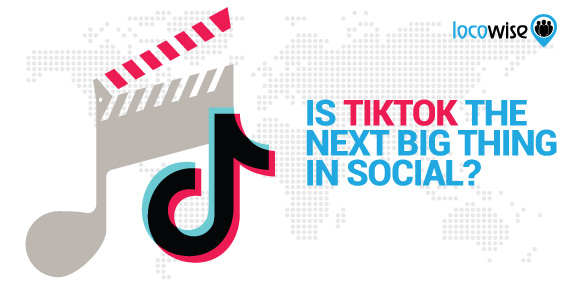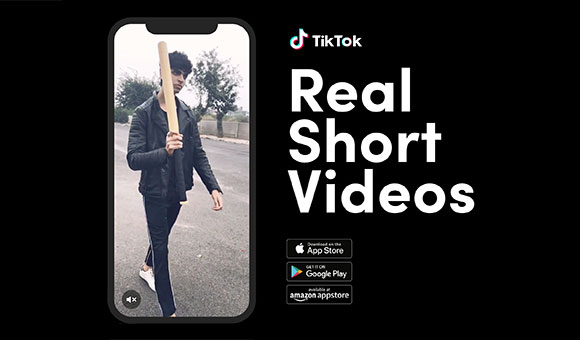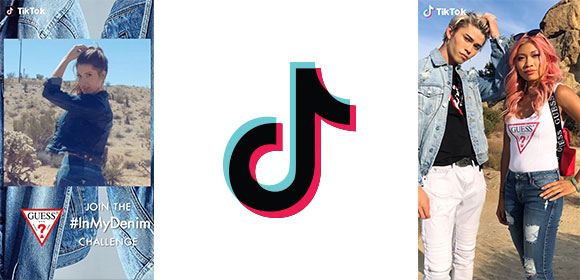Is TikTok The Next Big Thing In Social
Sahail Ashraf posted on 30 April 2019
If there is one thing we can say about social media and marketing, it’s that it has a very transient nature. While there are a few big platforms that pretty much work for everyone (Facebook, Instagram), the number of platforms that appear and then quickly disappear is often quite alarming. Because there are just a few ‘big’ platforms, others struggle to find any position at all in social media marketing.
Every now and then though, something comes along that may well prove to be disruptive. And the latest of these is something called TikTok. TikTok is not actually that new, but towards the end of 2018, it started to gain some real traction outside of China (where it originated).

So what is TikTok?
Believe it or not, Tik Tok was the world’s most downloaded app at the start of 2018. That’s the kind of fame it has, and the popularity doesn’t seem to be waning. Over 45 million downloads for the app took place in the first quarter of 2018. For perhaps very obvious reasons, that could make some marketers incredibly excited. We’ll look at any business use for the app later in this article, but an audience of that size (which is bizarrely, still ‘niche’ in the modern social media world) cannot be ignored.
In a nutshell, TikTok allows users to watch short musical clips. The library of clips is huge, so it has plenty to offer there. However, it also allows users to make their own music clips. The draw here is obvious when you see that Tik Tok allows for clips to be made that run for up to 60 seconds.
Users, or ‘Musers’ as they are known, can choose music snippets and add them to their own videos. This means there is a huge amount of creativity involved. On top of that, users can also add filters and effects, the kind of thing that has become pretty standard practice these days in social media circles. Essentially, it’s an aural platform, with the option to add striking visual elements to the videos you create.
So you can lip-synch to tracks, which makes it very attractive to the core audience (at the moment) of young adults and teens. But some of the users have changed the game a little bit, and used TikTok to create videos that show them skating, performing magic tricks and a host of other activities that, you know, young people actually like doing. It’s working well, and Tik Tok has a huge user base.
Another important part of the TikTok story is the ability for users to add reactions to videos. These are very short videos, but being able to engage on that level is potentially the start of something huge.

When the app began to be rolled out to countries outside China, the input of some celebrities, who naturally enjoyed the app, was instrumental in the app’s success. Jimmy Fallon, the US talk show host, was very much part of this. He set up a challenge via his show called ‘The Tumbleweed Challenge’ and used TikTok to promote and manage the challenge.
Perhaps one of the biggest reasons for Tik Tok making so much headway so quickly is its ease of use. It takes seconds to create and upload a video, so people can easily fit it into their day.
But what about brands?
You would think that the app, with its millions of users, would be an obvious choice for any brand wishing to amplify its message across the world.
Well, it kind of is an obvious choice, but at the same time it’s too early to say. There are currently no ad options available, for example, and that’s a big deal in social media marketing, where brands that don’t create ads generally aren’t managing social well.
However, it’s easy to see why TikTok could be seen as a potential marketing opportunity. There is the potential to create videos around contests, for example, and challenges. And TikTok also uses hashtags, and every marketer knows the value of those when it comes to building audiences.
An example of this came with Guess, which has denim as one of its products. The challenge Guess created on TikTok asked users to take photos of themselves in denim and used hashtags to build interest. It was immensely successful.
We think TikTok is worth considering, but there is that one nagging issue about Vine. When Vine went under, it was because there just wasn’t enough traction for the brand to move forward. It simply couldn’t cope with the size of the user base.

For TikTok to succeed, it has to keep moving forward and offering new ways to engage. Meanwhile, if brands can produce short videos that engage audiences, it may well be worth looking at.
If you’d like to get your hands on social media marketing metrics that actually mean something, try Locowise free, for a whole week.




